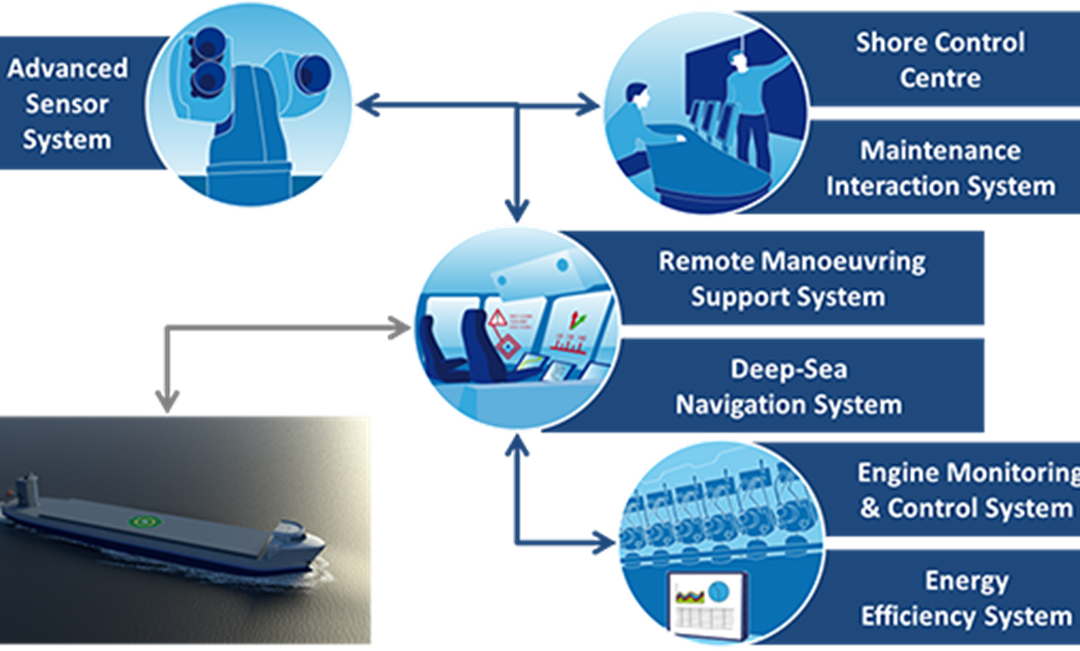During a recent Nor-Shipping meeting, several major players in this field came together to discuss the ships of the future. The European Union's MUNIN project, Rolls Royce and DNV GL are all developing technology and solutions aimed at putting unmanned vessels on the market. There is already a great deal of interest in this technology, and none of the experts at the seminar entitled 'How can unmanned merchant ships become a reality?' expressed any disagreement regarding what will happen in the future.
"It is not a question of whether the maritime industry will move in this direction, but rather of when this will happen," said Esa Jokioinen of Rolls Royce.
What is probably the most important argument in favour of going in for unmanned vessels is safety. Today, no less than 80 per cent of all accidents at sea are due to human error. Experts envisage that vessels will be operated from on-shore control stations, where highly trained personnel will run as many as six ships at a time.
"Unmanned vessels offer several advantages. People will be able to live and interact with their families and friends. This will make it easier to recruit capable and experienced personnel to the industry, and not least, safety will be enhanced," says Jokioinen.
A large proportion of vessel manoeuvres and navigation has already been automated.
"Norway is a flag state, and we ought to be the first to put unmanned vessels on the market. When Norway starts to do this, the rest of the world will follow. We enjoy high international status, partly due to our focus on safety," said Lars Alvestad, director of the Department of Vessels and Crew in the Norwegian Maritime Directorate.
However, the Maritime Directorate is still far from ready to give the green light to unmanned vessels. First, the technology will have to be tested and be shown to be stable over time, after which the Directorate will require that unmanned vessels can be shown to actually be safer than current crewed ships. Finally, all national and international regulations will have to be changed so that unmanned vessels can legally sail. According to current regulations, all ships must have a crew. But at sea, the trend is clear. Between 1850 and today, the average crew size has fallen from 250 to 15.
For several years, MUNIN (Maritime Unmanned Navigation through Intelligence in Networks) has been involved in research and development of unmanned vessels, and the project has come to the conclusion that the costs of operating such vessels will be lower, thanks to the need for fewer crew and having more room for cargo, given that ships will not need to be built with galleys, accommodation, recreation rooms, and so on.
"We have examined concrete examples of how unmanned vessels could be employed at first, and have come to the conclusion that offshore supply ships could be a good start. This is because they can operate within a relatively limited area and need to obey the regulations of only one state," says MUNIN technical coordinator Ørnulf Rødseth, senior research scientist at MARINTEK, which is part of SINTEF.
During the past two years, DNV GL has been working on an unmanned concept vessel that goes by the name of ReVolt. The vessels that currently ply the coast of Norway have an average age of 22 years, and are expensive to operate. DNV GL therefore wants to find out how much more efficient and environmentally friendly a battery-driven unmanned coastal vessel could be.
"With the aid of a well-developed hydropower network, the batteries could utilise as much as 60 percent of their capacity , compared to ordinary ships, which are currently utilise only about 15 percent. We also found that if coastal vessels are operated at low speeds they would function perfectly well with two-bladed propellers," said DNV GL researcher Hans Anton Tvete

